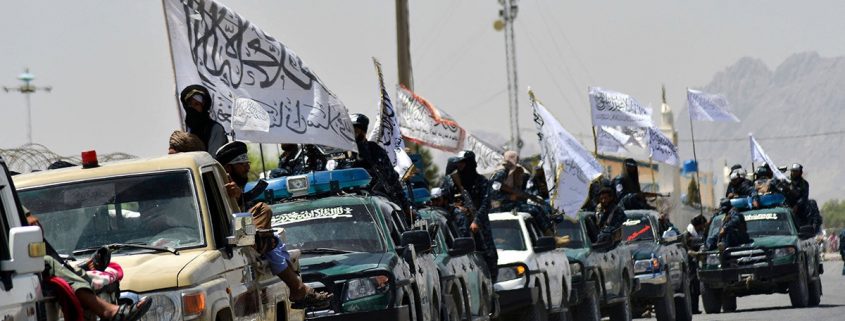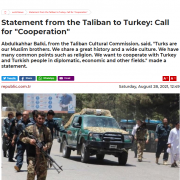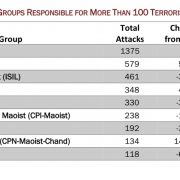The extortion campaign of the Taliban regime in full force
Now that the Taliban have won, they want everyone else in the world to pay for Afghanistan’s upkeep. Their foreign minister has warned darkly of terrible suffering to come, if huge amounts of aid are not quickly forthcoming, and at once transferred to the Taliban, whose leaders are waiting with hands confidently outstretched in Eleemosynary Position #1.
On September 13, more than $1 billion was pledged by donors, following warnings by the UN of a “looming catastrophe.” A day after that colossal sum was promised, the Taliban’s foreign minister nonetheless continued to call for aid, as if that $1 billion had not been enough.
In all of these pleas for money, the Taliban doesn’t want the world to know just how rich they are.
In the fiscal year that ended in March 2020, the Taliban reportedly brought in US $1.6 billion, according to Mullah Yaqoob, son of the late Taliban spiritual leader Mullah Mohammad Omar, who revealed the Taliban’s income sources in a confidential report commissioned by NATO.
Of that $1.6 billion, $416 million came from drugs – the sale of opium by the Taliban in markets abroad.
Mining iron ore, marble, copper, gold, zinc and other metals and rare-earth minerals in mountainous Afghanistan is an increasingly lucrative business for the Taliban. Both small-scale mineral-extraction operations and big Afghan mining companies pay Taliban Jihadis to allow them to keep their businesses running. Those who don’t pay have faced death threats.
According to the Taliban’s Stones and Mines Commission, or Da Dabaro Comisyoon, the group earns $400 million a year from mining. NATO estimates that figure higher, at $464 million – up from just $35 million in 2016….
“Taxed” industries include mining operations, media, telecommunications and development projects funded by international aid. Drivers are also charged for using highways in Taliban-controlled regions, and shopkeepers pay the Taliban for the right to do business.
The group also imposes a traditional Islamic form of taxation called “ushr” – which is a 10% tax on a farmer’s harvest – and “zakat,” a 2.5% wealth tax.
According to Mullah Yaqoob, tax revenues – which may also be considered extortion – bring in around $160 million annually.
Then there are voluntary donations to the Taliban and the Haqqani Network affiliated to it. These come from charities and trusts in the Persian Gulf countries, a region historically sympathetic to the group’s religious insurgency. These add up to about $150 to $200 million each year. In addition, private citizens, mainly in Saudi Arabia and the smaller Gulf states, as well as in Pakistan and Iran, send another $60 billion to the Haqqani Network.
The Taliban also makes money importing and exporting goods. It has a near-monopoly, for example, on the importing of auto parts. The exports include opium and looted minerals, so there may be financial overlap with drug and mining revenue. Mullah Yaqoob estimates that the Taliban makes $240 million a year from exports.
The Taliban also owns real estate in Afghanistan, Pakistan, and potentially other countries, according to Mullah Yaqoob. Yaqoob told NATO the Taliban’s annual real estate revenue is around $80 million.
The Taliban also receives funds, according to the CIA, from the governments of Saudi Arabia, Pakistan, and Iran, according to numerous U.S. and international sources. Experts say these funds could amount to as much as $500 million a year, but it is difficult to put an exact figure on this income stream.
Possessing such enormous wealth, one wonders why the generous donors being asked to empty their pockets yet again for the “impoverished people of Afghanistan” do not ask the Taliban itself to pledge hundreds of millions of dollars to head off that “looming catastrophe” of hunger. Of course, why should the Taliban be expected to help “their people,” the Afghans, when dozens of foreign states can be inveigled into doing it all themselves. The Taliban is betting – correctly, I’m afraid – that the outside world hasn’t been paying attention to the Taliban’s enormous accumulation wealth, and will continue to answer the call for aid to be given to the “suffering Afghans.”
This brings me to another, very sore, point. There is one new source of colossal wealth for the Taliban. It now possesses more than $90 billion worth of American military equipment that had been left behind in the rush for the exits. Why shouldn’t the Taliban be asked to return some of that expensive weaponry, now that the fighting has ended, letting the Americans repossess it, in exchange for a goodly sum – say, a few billion dollars — in American aid to Afghan civilians, to be transferred over five years? How much of that advanced equipment can the Taliban operate, even if it does hold onto it? If the Taliban turns down that offer, it will look bad in the eyes of the world. Why, many will ask, does the Taliban need all that weaponry, since the group has been proclaiming its peaceful intentions? Having won the war, it now claims to be entirely peaceful, has no claims on territory elsewhere, and assures us that it will not permit terrorists to ever again use Afghanistan as a base. And if it turns down that most generous American offer of aid, would it want to be seen as callously indifferent to the misery of the Afghans, with tens of millions of them now living in poverty, by refusing such a sensible deal?









Leave a Reply
Want to join the discussion?Feel free to contribute!